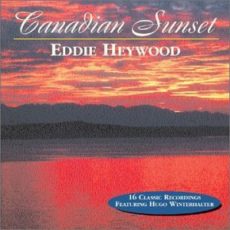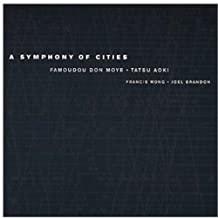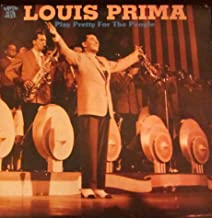
Daily Dose Of Jazz…
Herbert “Kat” Cowans, also spelled Cowens, was born May 24, 1904 in Texas. Working as a shoeshine boy as a child, his first professional engagement as a drummer was with the Satisfied Five, a local Texas ensemble. After moving to Wichita Falls, Texas he played in Frenchy’s New Orleans Jazz Band, then worked with Charlie Dixon. Quitting Dixon’s ensemble to finish high school while still in his teens, he went on to play in theater orchestras early in the 1920s.
Moving to New York City, Cowans played with Cleo Mitchell in the Shake Your Feet revue. Following this, he did work with the Kansas City Blackbirds, Jimmy Cooper’s Black and White Revue, and Eubie Blake in addition to leading his own band.
In the 1930s Herbert played with Fats Waller and Stuff Smith, before joining Eddie Heywood’s band for recordings behind Billie Holiday in 1941. He worked with Garvin Bushell in 1942, then played in the pit orchestra for the Broadway show The Pirate.
Cowans led a USO band in 1943, touring military bases worldwide, then led small ensembles for several decades thereafter. He also worked with Louis Metcalfe in 1963. He worked with USO again in East Asia in the 1970s, then retired to Dallas, Texas. Drummer Herbert Cowans passed away on January 23, 1993.
More Posts: bandleader,drums,history,instrumental,jazz,music

Requisites
Open House~Jimmy Smith | By Eddie Carter
During his time at Blue Note, any album by Jimmy Smith was considered something special to have in one’s library. Jimmy knew his instrument and his contributions to help popularize the Hammond B3 organ in Hard-Bop and Soul-Jazz are a notable achievement. Open House (Blue Note BLP 4269/BST 84269) was recorded in 1960 but remained shelved until 1968. The gentlemen joining Jimmy for this informal session are Blue Mitchell (tracks: A1, B1) on trumpet, Jackie McLean (tracks: A1, B1, B2) on alto sax, Ike Quebec (tracks: A1, A2, B1) on tenor sax, Quentin Warren on guitar, and Donald Bailey on drums. This lineup also appears on the companion album, Plain Talk, and my copy used in this report is the 1970 US Stereo reissue.
Side One starts with a visit inside Jimmy’s Open House. The ensemble builds the melody gradually with Jimmy alternating sections with the front line. Blue opens the lead solo with a relaxing informality, then Jackie takes over in low gear on the second reading, building steadily to a satisfying groove. Ike comes in next for a delightful interpretation and Jimmy wails on the closing statement preceding the ending theme and fadeout. Old Folks by Willard Robison and Dedette Lee Hill is one of the prettiest jazz standards ever recorded. It was composed in 1938 and Quebec gets the honors as the only horn, backed by the trio. Ike’s deeply thoughtful stating the pensive theme and also gives a tender first statement. Jimmy closes with a reflective comment before Quebec returns to take the song out with a tender ending.
The sextet begins Side Two with a visit to Jimmy’s Sista Rebecca. After a brief collective theme by the ensemble, Ike moves into a steady medium tempo on the opening chorus with the trio comfortably backing him. Blue follows, sailing smoothly with a sassy groove that’s sure to get the listener to snap their fingers and tap their toes. Jackie’s alto flows nicely on the third reading and Jimmy adds the final touch with some down-home country cooking leading to the theme’s reprise and fadeout. A pretty introduction and melody by McLean begins the 1928 song, Embraceable You by George and Ira Gershwin. The altoist creates a romantic atmosphere with a dreamy lead solo, then Jimmy briefly conveys a loving sentiment into an elegant ending.
Open House was produced by Alfred Lion and engineered by Rudy Van Gelder. The good news is the musicians are excellent, the music features great solos from the principals and solid support from Warren and Bailey. The issue I have with the record is the microphone placement for Jimmy’s organ has a tone of harshness as he’s playing on two of the tunes (tracks: A1, B1). I think that’s the reason the album wasn’t released after the session was recorded. That issue aside, if you’re a fan of Jimmy Smith, Soul-Jazz, or enjoy jazz organ, I invite you to audition Open House for a spot in your library. It’s one of the albums deserving greater recognition and with a stellar supporting cast of Blue Mitchell, Jackie McLean, and Ike Quebec is worth the price of admission! ~ Plain Talk (Blue Note BST 84296) – Source: Discogs.com ~ Embraceable You, Old Folks – Source: JazzStandards.com © 2021 by Edward Thomas Carter
More Posts: choice,classic,collectible,collector,history,instrumental,jazz,music,organ

Daily Dose Of Jazz…
Donald Moye, Jr., known professionally as Famadou Don Moye, was born May 23, 1946 in Rochester, New York and during his youth performed in various drum and bugle corps including the Rochester Crusaders as well as church choir. He took violin lessons during this time and was exposed to jazz at an early age since his mother worked for a local social club that had a jazz club next door that hosted musicians such as Kenny Burrell and Jimmy McGriff.
He went on to study percussion at Wayne State University in Detroit, Michigan and lived in the same building as trumpeter Charles Moore, who became his mentor. He played in the groups African Cultural Ensemble, and Moore’s group, the Detroit Free Jazz. He first encountered the Association for the Advancement of Creative Musicians (AACM) due to the revolving door of musicians in and out of Moore’s residence. In early 1968, Moore’s band traveled to Europe and Moye decided to live there for the next couple of years, touring and visiting the continent as well as Northern Africa.
By 1969, the AEC had augmented into the percussion-less quartet of Roscoe Mitchell, saxophonist Joseph Jarman, trumpeter Lester Bowie and bassist Malachi Favors Maghostut. The group crossed the Atlantic Ocean and arrived in Europe to perform throughout the continent. Don at the time was rehearsing and performing in Paris, France, at the American Center for Students and Artists. When Mitchell met with Moye again at the Center, he asked Moye to join his group, which was already known as the Art Ensemble of Chicago and had issued several recordings including three releases on the European label BYG Actual.
After returning to the States in the early 1970s, he played with the Black Artists Group in St. Louis, Missouri before settling in the Chicago, Illinois area. He was also in a duo with fellow percussionist Steve McCall who later was a member of Air with Henry Threadgil while still playing with the AEC. In the mid-1980s, Moye joined The Leaders, a jazz group consisting of AEC members Bowie, Chico Freeman, Arthur Blythe, Cecil McBee, and Kirk Lightsey.
Moye has also recorded numerous solo albums as leader of his own band. Moye toured and recorded again with the AEC in the 1990s, which was dealt a blow with the 1999 death of Bowie. Other groups he led in the ’90s include the Joseph Jarman/Famoudou Don Moye Magic Triangle Band and the Sun Percussion Summit. Famadou Don Moye continues to perform and record.
More Posts: bandleader,drums,history,instrumental,jazz,music,percussion

Daily Dose Of Jazz…
Joe Springer was born on May 22, 1916 in New York City, He played locally on Coney Island from about 1931. His first major gig was with Wingy Manone in 1935.
He first recorded in 1940 with Louis Prima and soon after worked with Buddy Rich in 1942, followed by a year with Gene Krupa until 1943. Joe went on to work with Oscar Pettiford, Tiny Grimes, Ben Webster, Charlie Barnet, Jimmy McPartland, Charlie Shavers, Roy Eldridge, and Raymond Scott.
Accompanying Billie Holiday regularly in the 1940s, Springer also worked with Anita O’Day. He continued working in New York City into the 1960s before retiring to Florida that decade.
Pianist Joe Springer passed away on October 24, 2004 in Miami, Florida.
More Posts: history,instrumental,jazz,music,piano

Daily Dose Of Jazz…
Billy Barber was born John William Barber on May 21, 1920 in Hornell, New York in 1920 and was known professionally as Bill or Billy. He started playing tuba in high school and studied at the Juilliard School of Music. After graduating, he travelled west to Kansas City, Missouri, where he played with the Kansas City Philharmonic and various ballet and theatre orchestras.
Joining the United States Army in 1942, he played in Patton’s 7th Army Band for three years. After the war, he started playing jazz, joining Claude Thornhill’s big band where he became friends with trombonist Al Langstaff, pianist Gil Evans and saxophone player Gerry Mulligan in 1947. Barber was one of the first tuba players to play in a modern jazz style, playing solos and participating in intricate ensemble pieces.
Becoming a founding member of Miles Davis’s nonet in 1949 in what became known as the Birth of the Cool recording sessions. He then worked in the theatre pit orchestras of The King and I, Paradiso, and the City Center Ballet. He joined up with Davis and Gil Evans in the late 1950s to record the albums Sketches of Spain, Miles Ahead and Porgy and Bess. Barber also played tuba on John Coltrane’s album Africa/Brass released in 1961.
Barber completed a master’s degree from the Manhattan School of Music and became an elementary school music teacher at Copiague, New York. He continued to play where possible including with the Goldman Band. In 1992, he recorded and toured with a nonet led by Gerry Mulligan, reworking material from Birth of the Cool. From 1998 to 2004 he was part of The Seatbelts, New York musicians who played the music of the Japanese anime Cowboy Bebop.
He is considered by many to be the first person to play tuba in modern jazz. Tubist Billy Barber passed away on June 18, 2007. of heart failure in Bronxville, New York.
More Posts: history,instrumental,jazz,music,tuba



